Did you know that the leaves from fava bean plants are edible? How about the flowers?
Often with fava beans (Vicia faba, also known as faba beans, broad beans, or Windsor beans), I can take ’em or leave ’em.
They have a wonderful light, nutty flavor, but after a day spent shelling fava beans (a tedious task that’s best done on a lazy afternoon with a glass of wine, if you ask me), I’m simply content with getting that same light, nutty flavor from the foliage.
That’s right, fava bean leaves and flowers are edible, and I’ll show you how to prune and harvest your plants to make use of this bonus crop!

What do fava bean leaves and flowers taste like?
The beauty of this is instead of waiting months for the pods on your fava beans to mature, you can start harvesting from the plants a lot sooner—when the flowers begin to appear, in fact.
And you can eat fava bean leaves and fava bean flowers before the pods are ready to be picked.
Fava flowers taste like a lighter version of fava beans, with a mildly sweet flavor. (Think: fresh spring peas.) They’re soft and velvety (with no bitter undertones), making them a delight to toss into salads or use as decorative, edible accents on desserts.
There are many flowers out there considered edible, but whether they’re actually palatable is another thing entirely. If you’ve ever tried dandelions, pansies, or marigolds, you know what I mean!
But fava flowers are not only beautiful and edible, they’re tasty in their own right.
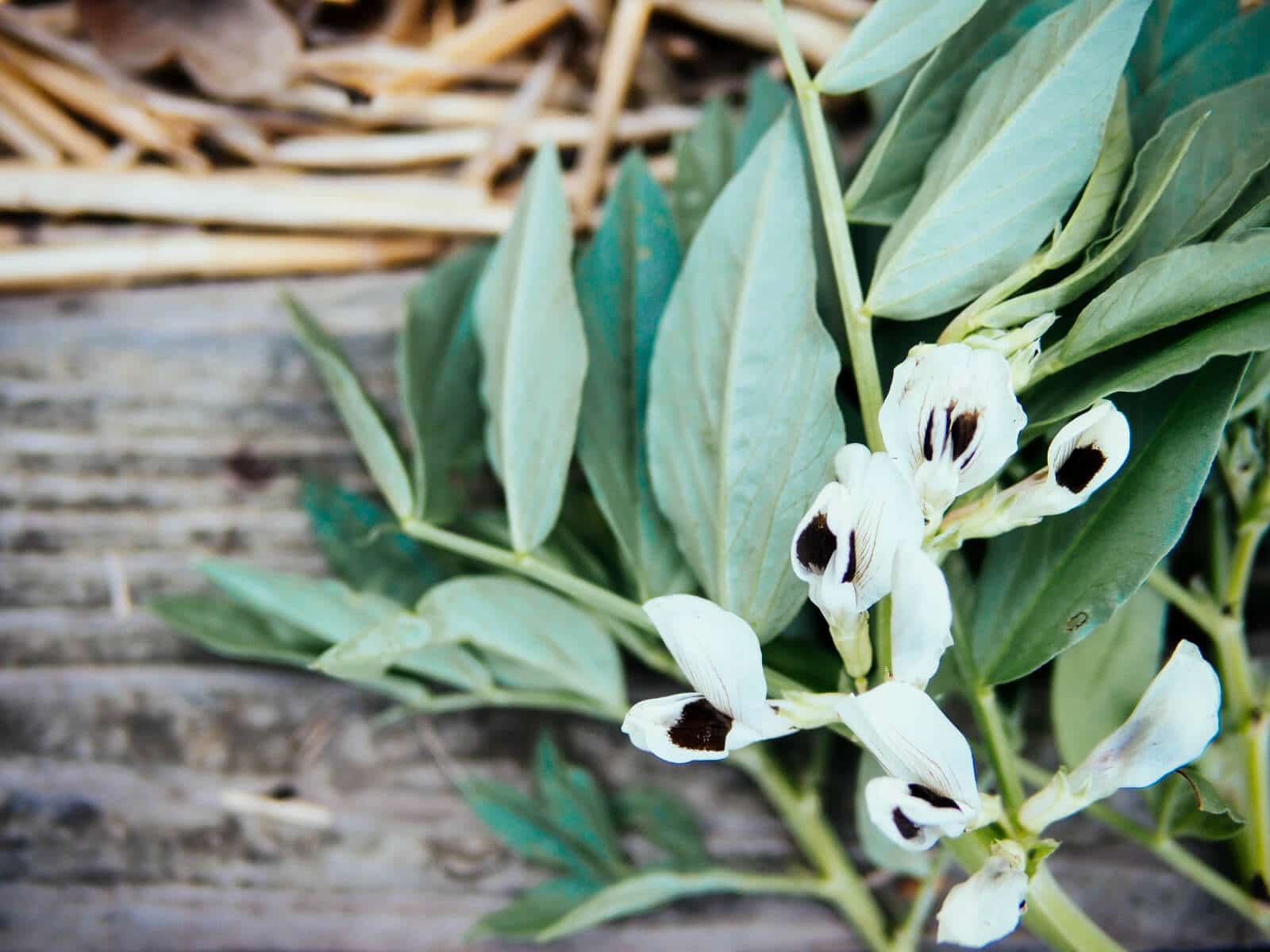
Fava greens, on the other hand, are more bean-y in flavor (in a good way). They taste like a cross between fava beans and pea shoots.
(If you haven’t tried the “bonus” crop that are pea shoots, I highly recommend you pinch off a few leaves in early spring or early fall to sample.)
Related: 11 Vegetables You Grow That You Didn’t Know You Could Eat
Fava greens are mild in flavor and silky in texture. Unlike other bean plants (like common green beans, Phaseolus vulgaris, whose leaves are also edible), fava plants are abundant in foliage, so you can harvest enough greens for a salad from just a couple of plants.
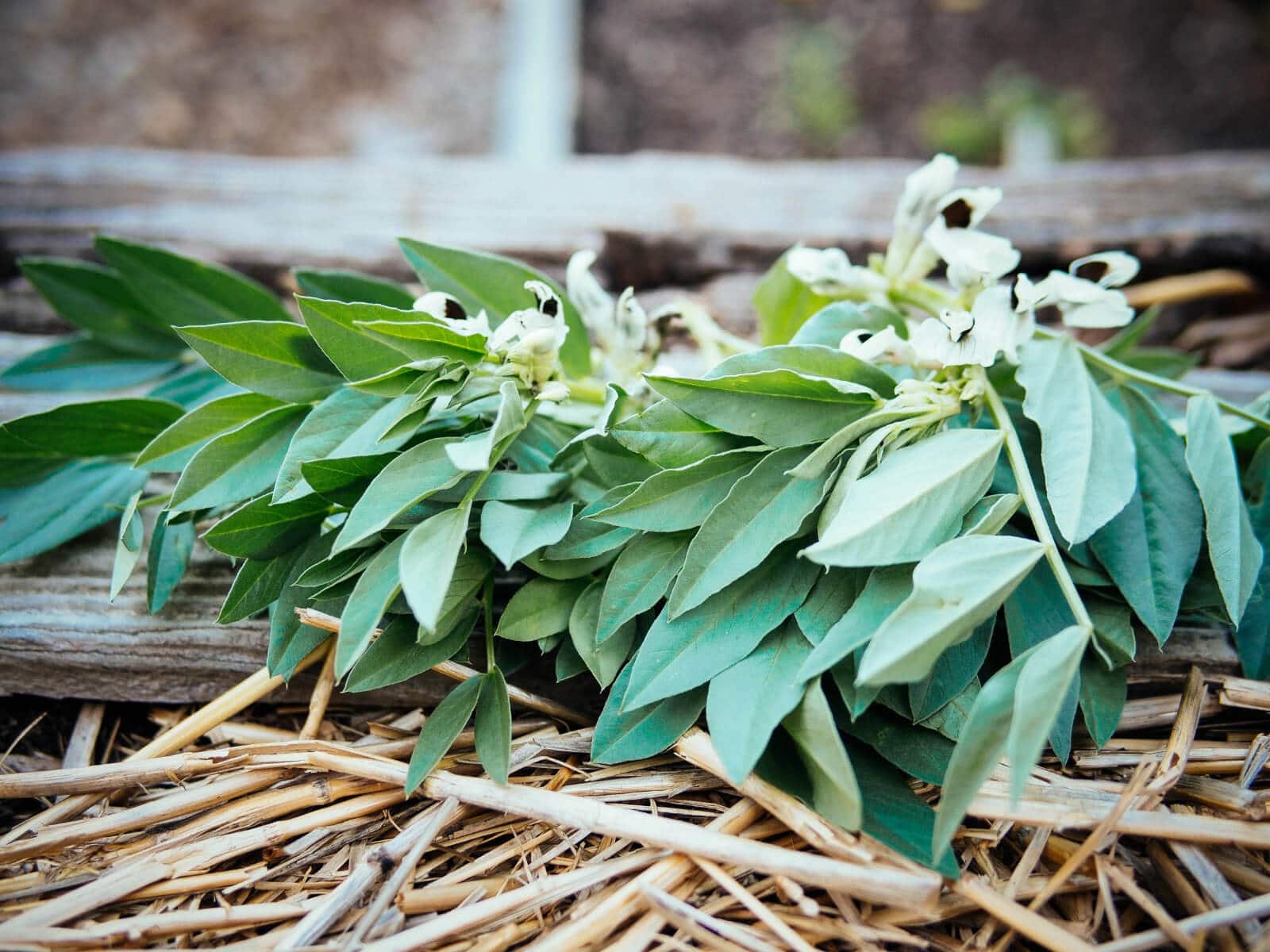
But getting to eat the greens is not the only reason to trim your plants. Pruning a few stems early in the season actually helps your fava beans grow bigger and better.
Why you should prune your fava bean plants
Fava beans grow about 4 feet tall in the average home garden (though it’s not uncommon for them to reach up to 6 feet in height) and often become top-heavy, flopping over under their own weight.
They’re taller and lankier than bush beans but can’t climb the way pole beans do, so they always need stakes or cages for support.

With some strategic pruning, however, fava bean plants can be kept tidier and encouraged to produce more blooms.
If you pinch off a few stems, you promote the growth of new shoots (and therefore new leaves, flowers, and beans) to grow from the pinched-off point. This also helps the fava plant stay full and bushy, rather than tall and gangly.
It’s similar to the way you’d pinch off basil stems to spur outward (rather than just upward) growth. In other words, pruning a fava bean plant is a quick and easy task!
How to prune your fava plants
Fava plants typically start to flower about six weeks after sowing. At this point, you can start to trim the tops for their tender greens.
Related: Planting Fava Beans as a Fall Cover Crop
To do this, pinch or snip the first few inches (or the first two to three sets of leaves) from the top, flowers and all, just above a leaf node (a junction on the stem where a young shoot is starting to emerge).
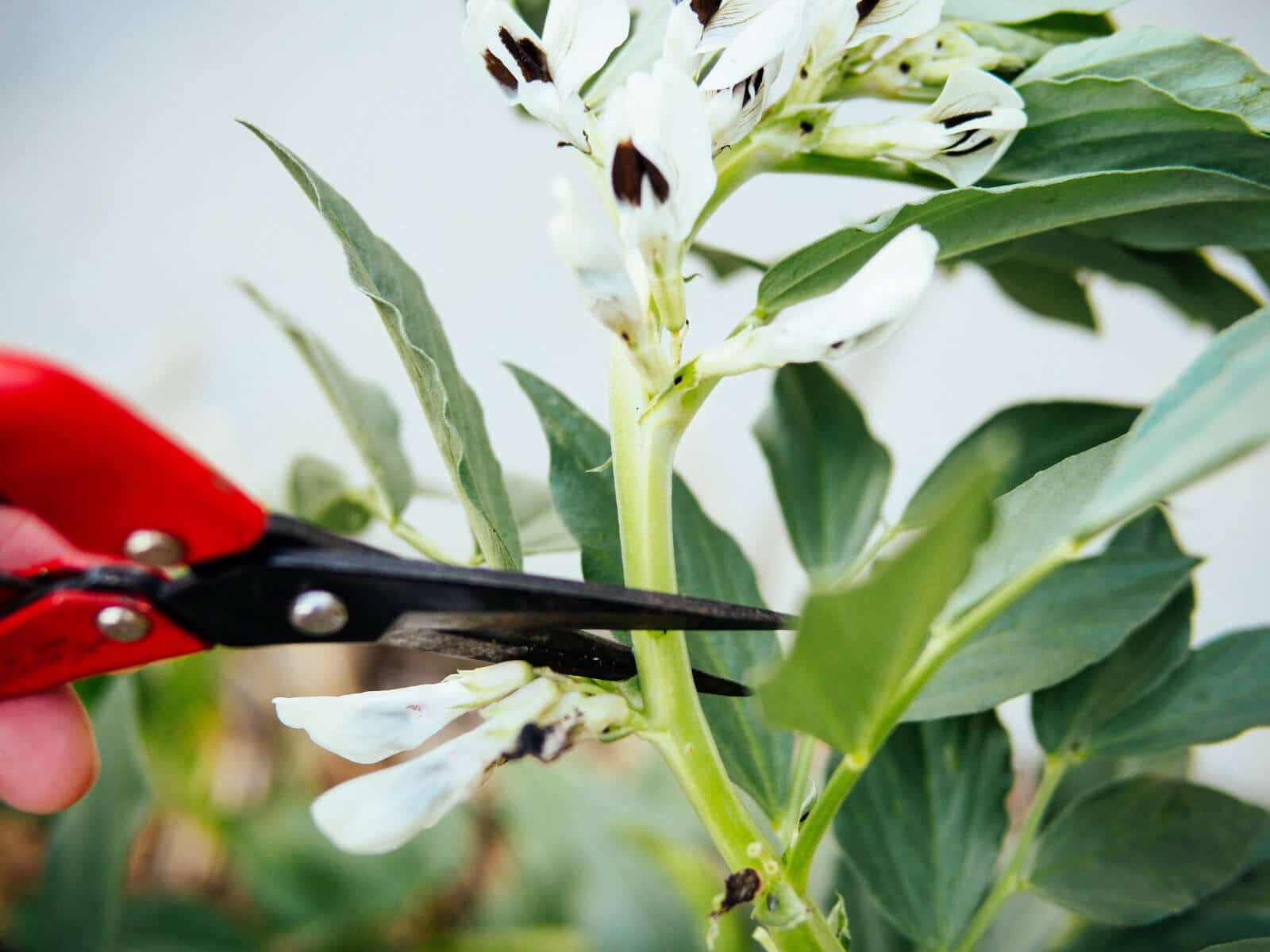
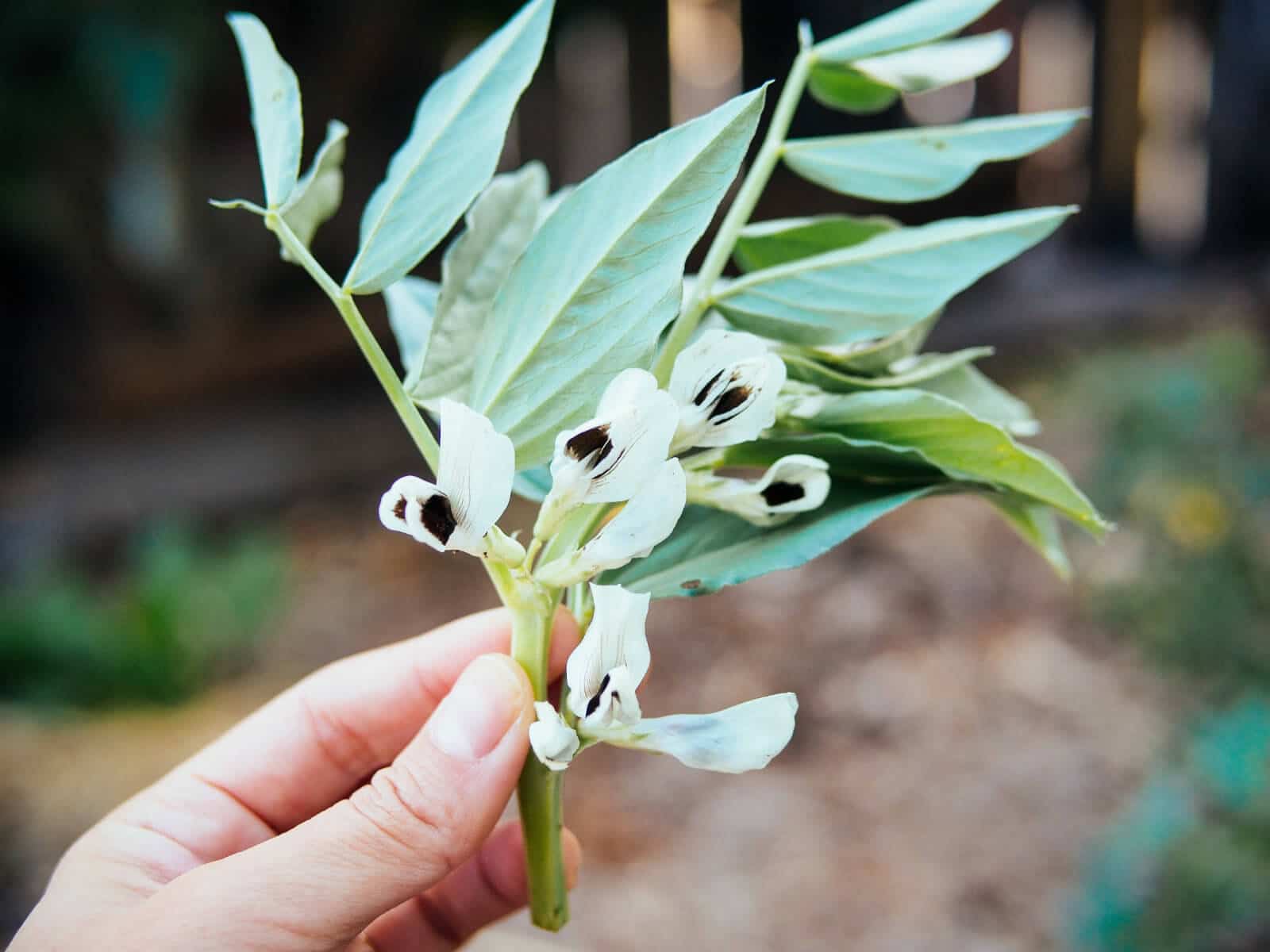
I only pinch off the leaves and flowers once every couple of weeks, as I do want the plant to focus on producing beans instead of generating foliage.
If you’re not a fan of the beans, you can grow favas simply for their leaves and harvest more (and more often).
After your plant has produced a full crop of mature beans, you can cut the whole plant down to the ground, leaving about 6 inches standing. It looks and feels a little shocking the first time you do this, but not to worry—if temperatures remain mild, the plant will grow back (albeit with a smaller harvest).
Always ensure you prune above a leaf node where you see young shoots starting to sprout. This vigorous haircut often encourages the plant to grow again and produce a second crop of beans.
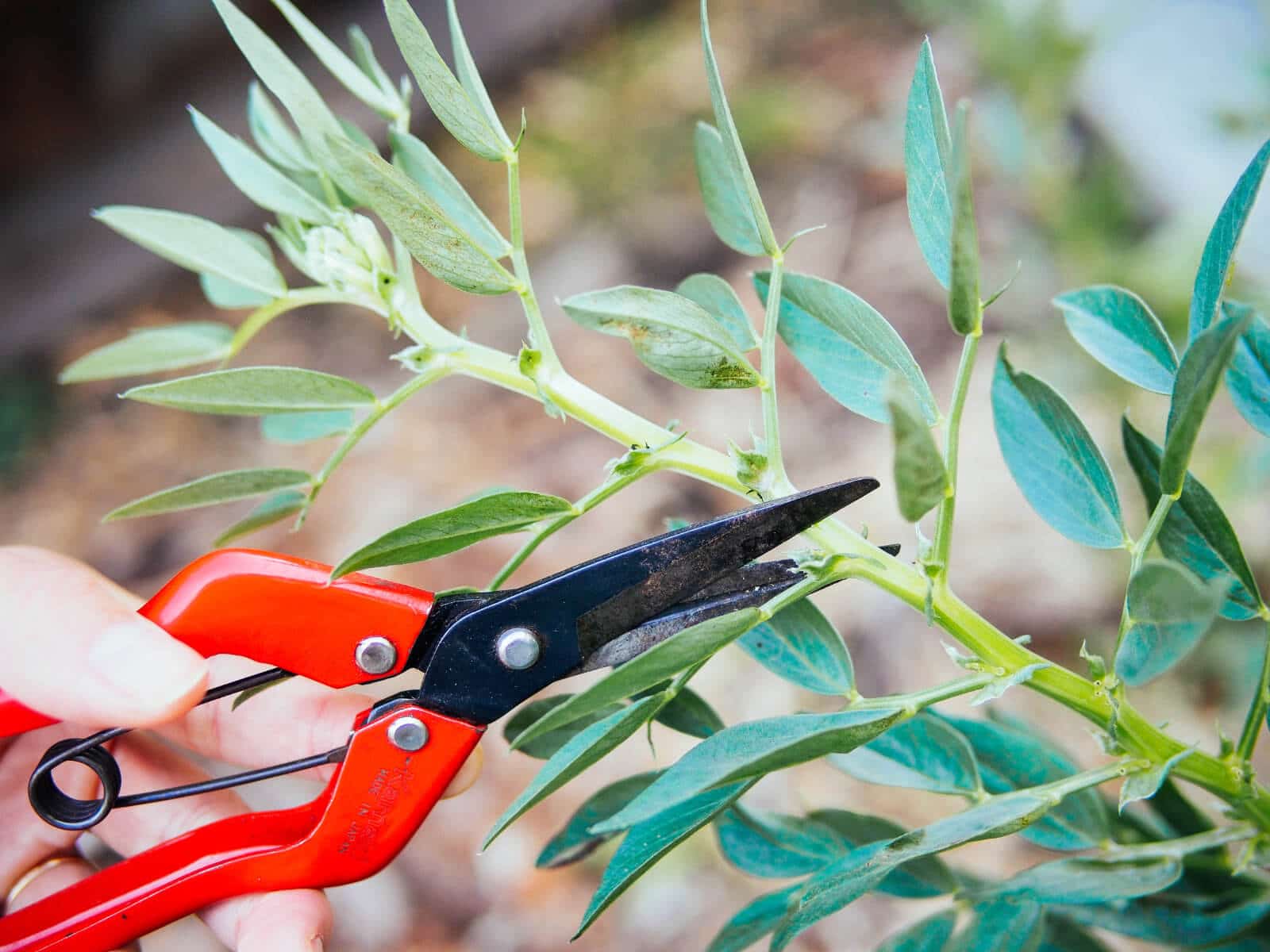
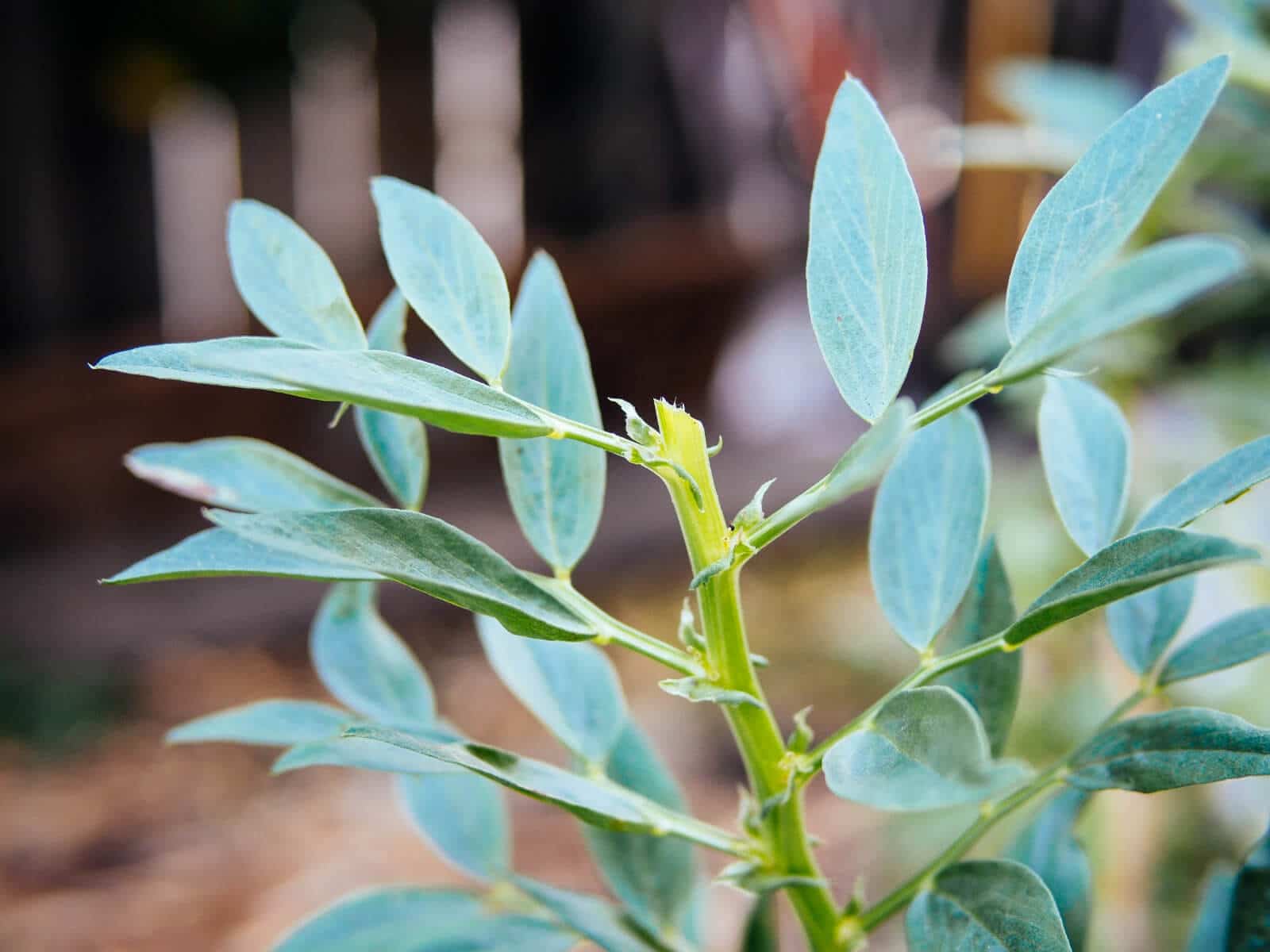

If you seeded your fava plants in early spring and harvested in early summer, however, you may not get a second crop since favas don’t fare well in summer heat.
Related: Find First and Last Frost Dates Accurately with This Custom Planting Calendar
At that time, you can cut the whole plant down, leave the roots to rot in situ to release nitrogen back into the soil, and compost the spent foliage or leave it on top of the soil as mulch.
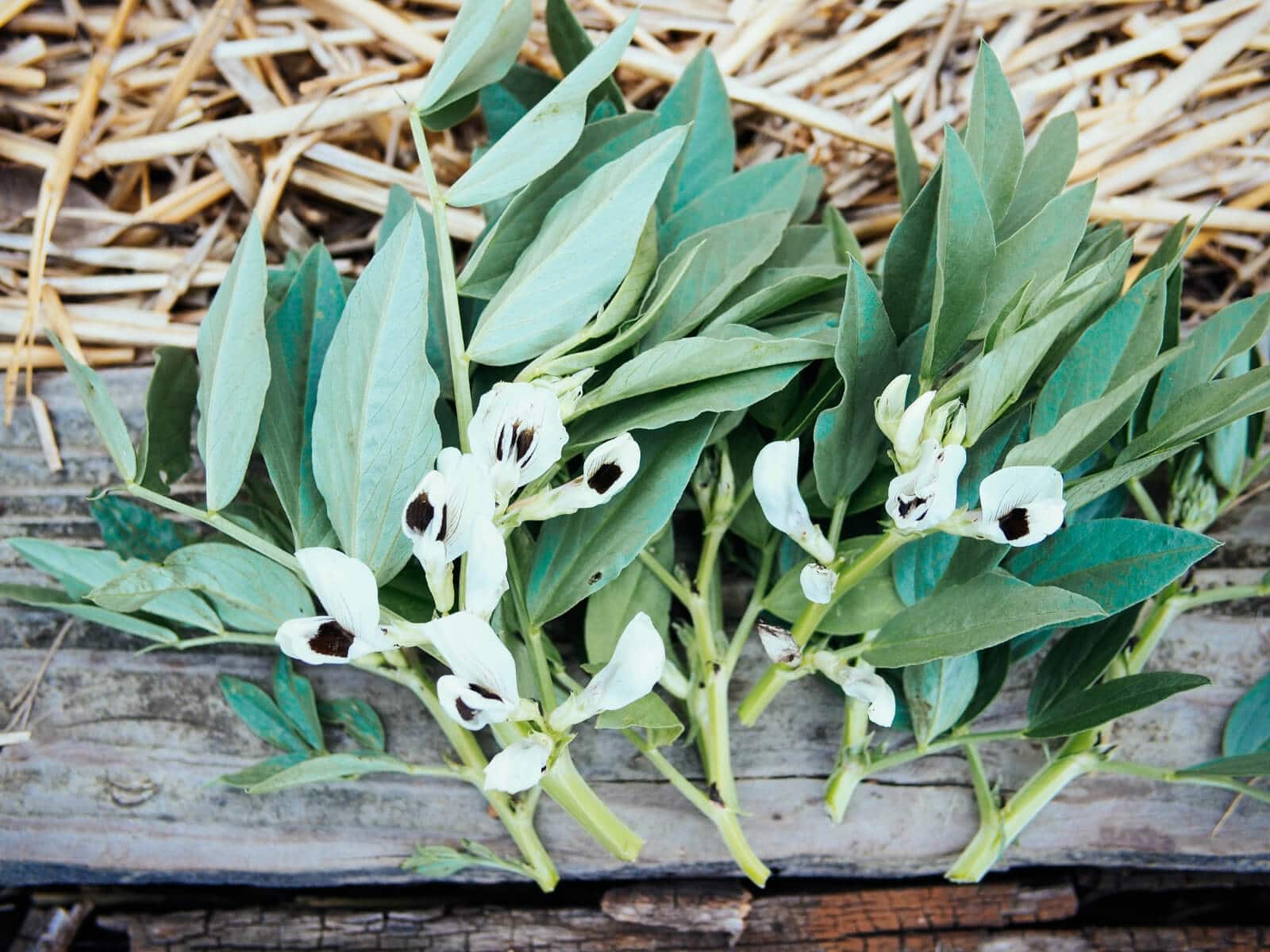
Are you surprised that you can eat fava bean leaves?
There are many other plants you grow or buy that are edible, too, and that includes the parts you normally throw out when you cook: carrot tops, radish tops, or the dark green ends of leeks.
Learn how to put all of these delicious plants to use in real recipes (not just vegetable stock) in my book, The No-Waste Vegetable Cookbook. You’ll find yourself composting less and less, and that’s a good thing!
This post updated from an article that originally appeared on December 11, 2013.
















I was going to plant fava as a soil builder and to eat. But the whole crop rotation thing has me confused. Should I only plant where I have beans this year? Or is everywhere ok. Still new at this.
Thank you so much for all your great information!!!
RT @HowGrow: Wait, what? the leaves + flowers of the fava plant are edible too? @theGardenBetty has the scoop http://t.co/rQSYWPs1SD
RT @ERay_G: Fresh Greens! Harvesting Fava Leaves + Flowers @theGardenBetty http://t.co/wM2RjA6pJ0 #gardenchat http://t.co/ie1tirRz4f
Wait, what? the leaves + flowers of the fava plant are edible too? @theGardenBetty has the scoop http://t.co/QA55nY9vEL #gardenchat
Yes, the greens are edible and delicious! Harvesting the Leaves (and Flowers!) From Your Fava Plant http://t.co/ZF98BiMq8I #gardenchat
Prune the sweet, tender tops from your plants. Harvesting the Leaves (and Flowers!) From Your Fava Plant http://t.co/YlwI6bIIRF #gardenchat
Fresh Greens! Harvesting Fava Leaves + Flowers
@theGardenBetty http://t.co/0JTGmXVRzA #gardenchat #vegetarian #paleo http://t.co/SG2oYTaX1l
They taste fresh and green, like spring peas. Harvesting the Leaves (and Flowers!) From Your Fava Plant http://t.co/wM2RjA6pJ0 #gardenchat
Diana Heffernan-Schrader liked this on Facebook.
I love the basic instructions on your posts..now I don’t have to look any further for how to grow fava beans!
Don’t like the beans? You’ll love the leaves. Harvesting the Leaves (and Flowers!) From Your Fava Plant http://t.co/jiuvCZ4Dfs #gardenchat
Think of the greens as a bonus crop! Harvesting the Leaves (and Flowers!) From Your Fava Plant http://t.co/6EfTC9lg0K #gardenchat
Last year my favas were producing tons of flowers but not setting pods. I read somewhere that if you pinched off the tops of the plants they would set pods sooner. I tried it, and cooked the tops, and the plants did set pods soon after.
Interesting… maybe it’s part of their survival mechanism? If their leaves are getting trimmed, they might speed up the process of setting seed sooner.
we planted our fava’s back in September as per the recommendations for our area,but they have not done well. I’m not impressed thus far. But, I may have to try this idea of eating the leaves, just to try at least.
Was there an Indian summer in your area? Favas are cool-weather plants and heat stunts their growth. I planted a few in September as well, but we had an unexpected heat wave and they did poorly. I planted more in October and November and those ones are thriving now.
Harvesting and Pruning the Leaves (and Flowers!) From Your Fava Plant:
Did you know that the leaves from fava… http://t.co/sTK3QzR3Pk
Blogged on Garden Betty: Harvesting and Pruning the Leaves (and Flowers!) From Your Fava Plant http://t.co/EXKCw8xf2F